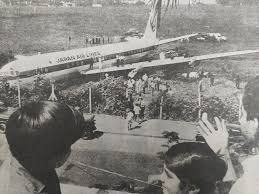Tucked away in the upscale suburb of Juhu, Mumbai, lies a piece of Indian aviation history that predates the nation’s independence—Juhu Aerodrome, India’s first civil aviation airport. Established in 1928, this aerodrome, while no longer a bustling hub of commercial activity, remains a symbol of the country’s pioneering efforts in the field of aviation. Today, it serves primarily VIP flights and helicopter services, but its rich history continues to echo through time.
A Historical Journey Through Juhu Aerodrome
To truly appreciate Juhu Aerodrome, we must journey back to the late 1920s, a time when India was steeped in political upheaval, fighting for its freedom from British rule. Amidst this backdrop of revolution and resistance, significant developments were taking place, not just on the ground, but in the skies as well.
In 1928, the Juhu Aerodrome was constructed, marking a pivotal moment in India’s aviation history. Just four years later, in 1932, the legendary Indian aviator and industrialist, JRD Tata, made history here. Flying a Puss Moth aircraft, Tata inaugurated India’s first commercial mail service, landing at Juhu Aerodrome and setting the stage for what would become one of the world’s most respected airlines—Air India.
By 1936, the aerodrome had expanded, adding new runways and becoming a central hub for Tata’s airmail operations. It was during this period that Juhu Aerodrome saw significant upgrades, including the introduction of concrete runways and night flying services, turning it into a critical aviation center.
During World War II, the aerodrome played a strategic role, serving as Bombay’s primary airport and assisting Britain and its allies in the war efforts across Asia. However, the demands of post-war aviation and the challenges of waterlogging led to the transfer of commercial operations to the larger RAF Santacruz (now Chhatrapati Shivaji Maharaj International Airport) in 1948. Despite these changes, Juhu Aerodrome’s legacy as the birthplace of Air India remains undiminished.
Juhu Aerodrome in Contemporary Times
While its days as Bombay’s primary airport have passed, Juhu Aerodrome continues to thrive in unique ways. The aerodrome remains an essential part of Mumbai’s aviation landscape, catering to VIP flights, helicopter operations, and small General Aviation aircraft.
For those interested in Bollywood trivia, Juhu Aerodrome has also had its share of cinematic fame. It has served as a filming location for several notable movies, including “Slumdog Millionaire” and “A Wednesday,” adding a touch of Hollywood to its storied history.
Despite efforts by the Airports Authority of India (AAI) to upgrade and expand the aerodrome, commercial operations have not resumed. Yet, Juhu Aerodrome continues to play a crucial role, particularly for the Bombay Flying Club, which trains aspiring pilots. The airfield is also used for military operations and is a launch point for numerous high-profile personalities, including national leaders and celebrities.
The Legacy of Juhu Aerodrome
Juhu Aerodrome may no longer be the bustling gateway it once was, but its historical significance and enduring presence in Indian aviation cannot be overstated. From launching India’s first airmail service to being a strategic base during World War II, Juhu Aerodrome is more than just an airfield—it’s a living testament to the country’s aviation legacy.
As India continues to soar to new heights in the aviation industry, Juhu Aerodrome stands as a reminder of the pioneering spirit that took flight nearly a century ago. Its story is a blend of history, innovation, and resilience—an enduring chapter in the ever-evolving narrative of Indian aviation.


